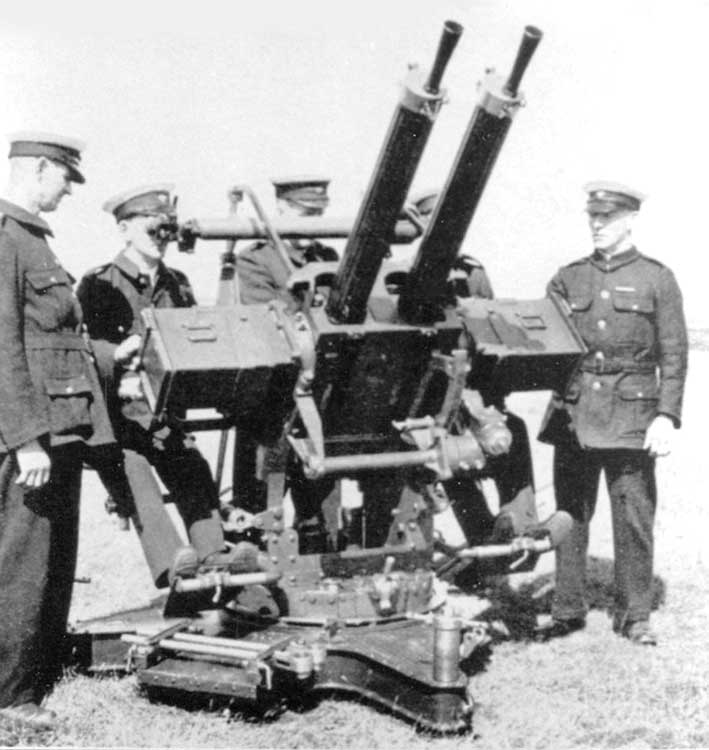
The story of the .50 Browning in World War 2 is well known; its extensive use by U.S. and subsequently Allied forces on land, sea and in the air established its reputation and usefulness to such an effect that it remains a valuable weapon today. Comparable weapons were fielded by Soviet forces in 12.7×108 caliber, which also still survives in service to this day in several different guns. However, the Browning was not the only gun to be designated .5 inch to see service during that conflict: the British had their own version using unique ammunition; the .5 inch Vickers.
The story of the Vickers gun is also well known. It originated in the first successful self-powered machine gun, the Maxim of 1884, which had become the standard machine gun of the British Army by 1891 and was adopted (under various names) by many other nations. A modified version with a more compact mechanism was adopted by the British Army early in the 20th Century as the Vickers-Maxim but later simply became known as the Vickers gun. It was available for various rifle cartridges up to .45 inch but in British service was overwhelmingly used in .303 inch caliber. It fought through two world wars and remained in front-line British service until the mid-1950s. The .5 inch version had a much shorter life, emerging in the 1920s and disappearing from view after World War 2.
Ammunition Development
The origin of the .5 inch Vickers goes back to the First World War, when a need arose for a larger-caliber machine gun for several different reasons. One was the need to fire bullets large enough to carry a useful incendiary charge to set light to enemy hydrogen-filled balloons and airships. To achieve this, some of the rifle-caliber Vickers had been chambered for obsolete rifle cartridges such as the 11mm Gras (tested by the U.S. into the 1920s), but a purpose-designed modern cartridge would obviously be better. The second was the need for a more hard-hitting machine gun against aircraft, some of which were now being fitted with armor. The third was the development of the tank, which required a better armor-piercing performance than rifle-caliber guns could achieve.
The initial British developments during the Great War were based around a .600/.500 inch cartridge originally derived from an elephant gun round. This first appeared in an anti-tank rifle, the Godsal of 1918, followed by a slightly scaled-up Vickers. The Godsal was never adopted (although one example has survived) but the cartridge for the machine gun went through various evolutions, included a version with a belted case, until the final form emerged in 1921. This used a rimless 12.7×81 case and was known by Vickers as the .5V/580, after the bullet weight in grains. The exact bullet diameter was fractionally greater than the contemporary .50 Browning’s, at 0.514 inches compared with 0.510 inches. Muzzle velocity was around 2,460 fps and total cartridge weight 1,280 grains. It developed about three times the muzzle energy of the .303 inch, but only two-thirds that of the .50 Browning.
The ammunition was officially adopted for service in 1924.
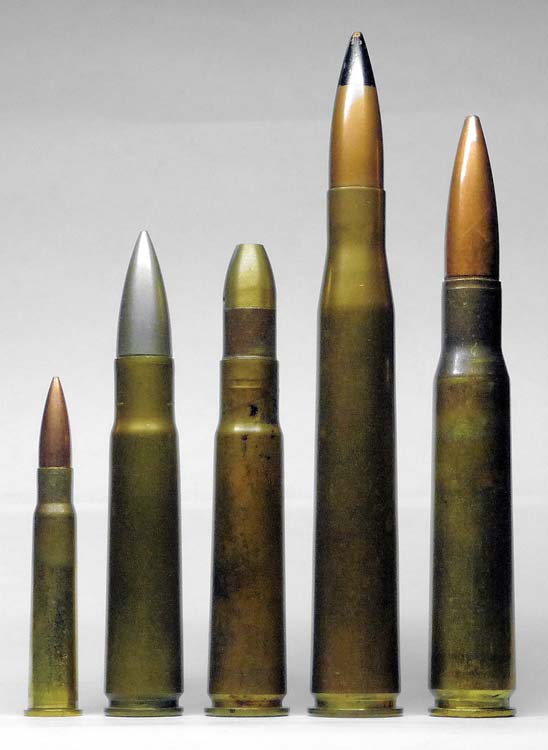
Several different loadings of the .5V/580 round were developed for British service including Ball (with a two-part core: lead in the base and aluminium in the tip), Armor Piercing (with a hardened steel core), Semi-AP (with an unhardened steel core), SAP-Tracer, and Incendiary (which was similar in design to the U.S. .50 incendiary). The ones most commonly used in service were the SAP and SAP-T, because their penetration wasn’t much less than the AP and they were a lot cheaper.
All of the bullets in British service were flat-based, which limited their maximum ballistic range to 4,265 yards. They could achieve a maximum altitude of 9,500 feet. Of course, the effective ranges were very much less than this; they were probably in the region of 800 yards against aircraft and 1,600 yards against small surface targets.
The British Guns and the Browning Tests
The Vickers .5 inch gun developed to fire this ammunition was offered in three different versions for the three services. The army gun was water-cooled and initially fired at 450 rpm. The naval version was similar in appearance but had the rate of fire boosted to 700 rpm by the removal of the delay pawl which held the crank until the barrel returned to battery – stronger buffer springs were also fitted. The air force version combined the 700 rpm rate of fire with an air-cooled barrel. The army and naval versions had the traditional large-diameter fluted water-cooling jacket, just like the rifle-caliber version, with the naval gun distinguished by a very long flash-hider, but the aircraft gun looked radically different, with flat, tapered plates running each side of the barrel. Barrel lengths were 31 inches or 62 calibers, overall lengths 47-53 inches. The gun barrel recoiled a maximum of 1.25 inches and a recoil pull of 385 lbs was developed. The guns were belt-fed, using either a web belt (initially) or a disintegrating steel link type, with 100 rounds in the belt.
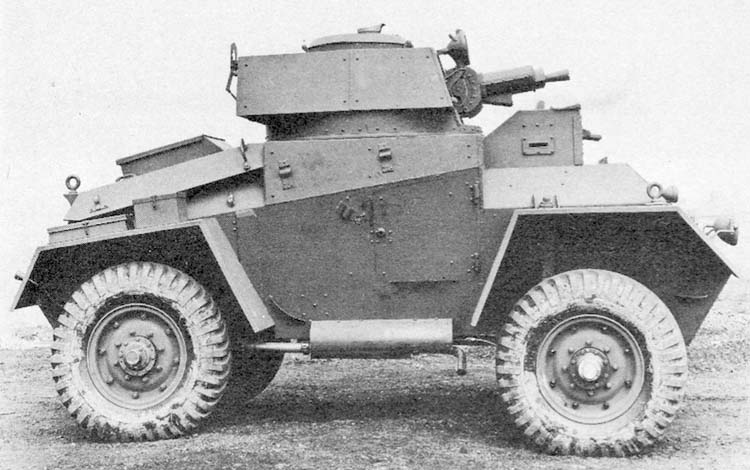
During the 1920s the British Admiralty tested an early .5 inch Vickers in comparison with the M1924 water-cooled version of the .5 inch Browning gun. A 1928 report of the tests has survived and Chart 1 reveals this information.
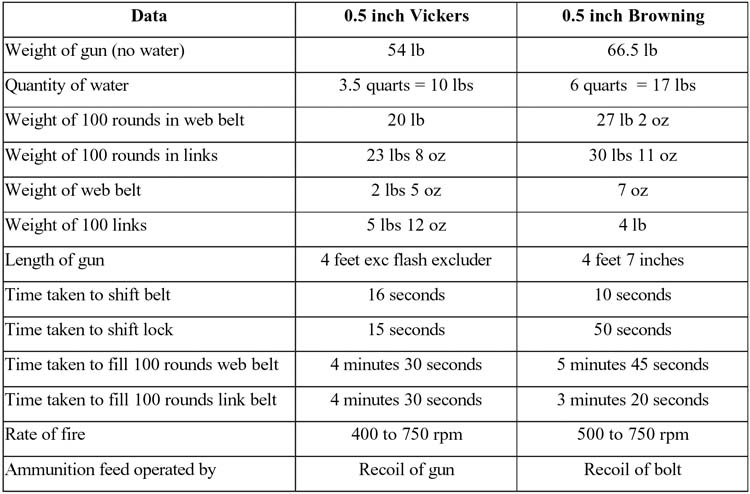
- Mechanisms: Vickers rated superior, as consists of only two parts (lock and feed box) compared with three (bolt, feed box and recoil buffer). The Vickers lock takes only one-third the time to replace, the feed box is also quicker to replace as well as being more reliable, and the feed being driven by gun recoil has no ill effect on the operation of the lock.
- Rate of Fire: both can be adjusted up to 750 rpm, but the Vickers can be adjusted by means of a crank check lever which can be regulated during firing, while the Browning requires the back plate to be removed to adjust the recoil buffer.
- Temperature: the much larger water capacity of the Browning kept the barrel cooler, as shown in Chart 2.
- Choking of Barrel (i.e. fouling by bullet jacket deposits): slightly greater in the Vickers due partly to higher barrel temperatures and partly to a difference in hardness in the bullet casing (jacket). It was noted that this was less with AP bullets
- Fouling and grit: both guns performed satisfactorily, but it was noted that the Browning ended up with more grit in the mechanism due to it being more exposed by the opening of the gun casing. Also, after prolonged gun firing the Browning’s mechanism was coated with black fouling while the Vickers’ was clean.
- Control: in both guns, the vibration was too severe to keep them on target so shoulder stocks were recommended for accuracy.
- Belts and filling machines: neither web belt was found to be satisfactory. The Vickers belt was made using metal spacing strips and eyelets, which were inadequately secured, while the Browning’s was stitched and could only be used two or three times. Both metal link belts were satisfactory. The Browning had filling machines for both types of belt (the metal belt filler was commended, the web one condemned), the Vickers had none.
- Reliability: it was noted that the Vickers was an early example and suffered some problems, but these were corrected with modified parts during the trials and it was then very reliable. The Browning was reliable at high rates of fire but less so at lower rates, especially at higher elevations. Any kink in the belt would cause a failure to feed. The Browning’s casing fractured during the test.
- Conclusion (reproduced in full): “The results of the trials lead to the conclusion that the .5-inch Vickers has the following advantages:
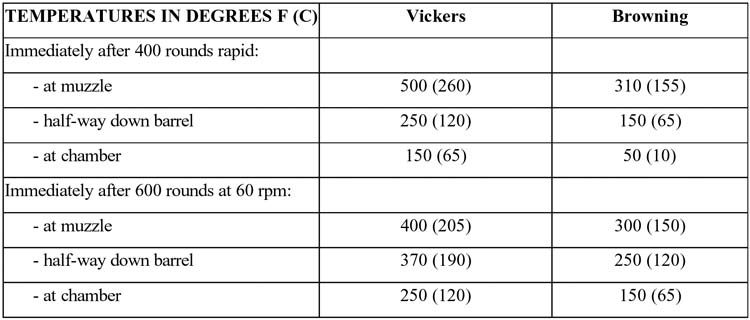
- Greater reliability
- Wear and failure of parts – if any – are to minor parts that can be readily replaced.
- Care and maintenance is easier to the inexpert, on account of its less complicated recoil and buffer mechanisms.
- The mechanism and functioning of the gun requires less special or expert knowledge to obtain a good, reliable performance, and is more readily understood by the average seaman, who already receives training in the similar mechanism of the .303-inch gun.
- Readily converted to right or left gun.
- From a general technical point of view, it is the opinion that the fundamental principle of the mechanism and the action of the Vickers gun is superior to that of the Browning, and is more certain in its action generally.
The .5-inch Vickers gun is therefore recommended for the Naval service in preference to the Browning gun.”
The Aircraft Guns
The RAF also evaluated the .5 inch Vickers and Browning guns. The results were inconclusive; the Browning was more powerful but was longer and heavier. It was concluded that the .303 inch version of the Vickers was almost as effective as the HMGs against the light, unarmored aircraft structures of the time and it was much lighter as well as faster-firing. The RAF accordingly decided not to proceed with a heavy machine gun, while noting that any widespread adoption of armor for military aircraft would force a re-think. By the mid-1930s, when the increasing performance and toughness of aircraft began to cast doubt on the future of rifle-caliber guns, the RAF opted for the greater destructive power of a 20mm cannon, choosing the French Hispano HS 404. A few .5 inch Browning M2 guns were used late in the Second World War in applications for which the Hispano was considered too big and heavy, but apart from this no heavy machine guns were fitted to British aircraft.
The Vickers wasn’t the only .5 inch gun considered by the RAF. BSA (Birmingham Small Arms) offered their Model 1924 gun for aircraft observers. It was intended to be flexibly mounted so used a long-recoil mechanism to soften the recoil kick, and was fed by a pan magazine on top of the gun. Initially, this used BSA’s own (very similar) ammunition but it was later slightly modified to use the Vickers 12.7×81 cartridge. The RAF rejected it as being too heavy, too slow-firing (only about 400 rpm) and having too small an ammunition capacity (37 rounds).
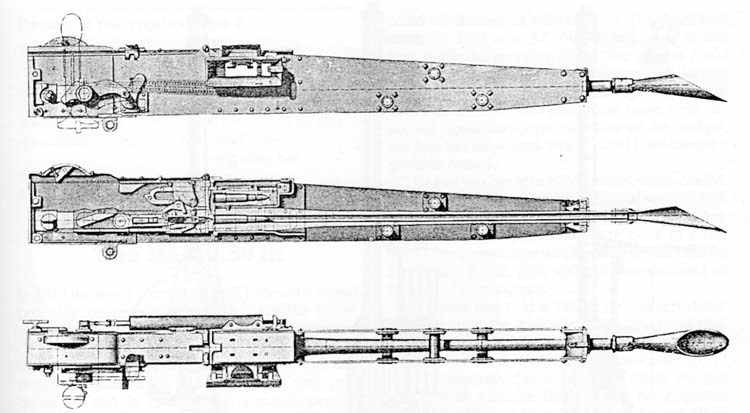
The Naval Guns
The naval version of the Vickers .5 inch, designated the Mark III, was the most successful, with over 12,500 accepted for service in the Royal Navy. It was initially used in a curious four-barrel mounting in which the guns were stacked vertically, which in 1939 was the RN’s standard short-range AA equipment. This was manually-operated, but later in the war a power-operated twin mounting (with side-by-side guns) was used in motor gun boats and similar craft. As an AA gun it soon proved insufficiently powerful and was gradually replaced during the war by the 20mm Oerlikon. China bought 19 examples of this gun.

The four-barrel mounting had its guns adjusted to provide a spread of fire, amounting to 60 feet wide and 50 feet high at 1,000 yards. The belts were wrapped around large drums which carried 200 rounds per gun. Vickers claimed that it could fire all 800 rounds in 20 seconds and could then be reloaded in a further 30 seconds. They also claimed, rather optimistically, that it “could deal with aircraft at ranges of 1,500 yards and below.”
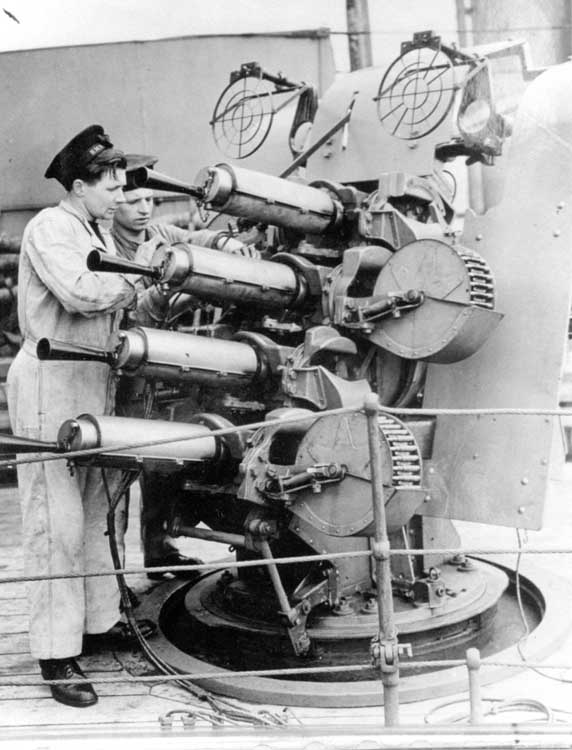
A specification document dated November 1935 exists concerning the supply of “Vickers 12.7mm Automatic Gun Mark III (Amended)” for installation in submarines of the Turkish Navy, but it is uncertain whether these weapons were actually delivered or used. The rate of fire in this example is quoted as 600 rpm, with AP or SAP ammunition being specified. Some details of the performance guarantees are summarised below:
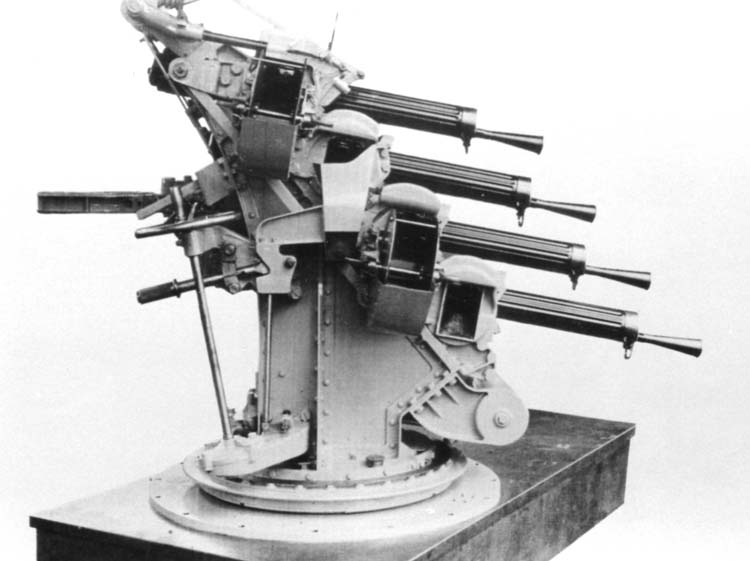
- Accuracy: when fired from a fixed (test) barrel, the average size of a 20-round group must not exceed 12 inches at 500 yards.
- Armor penetration: 70% of rounds fired must perforate a 15-16 mm hard steel plate (440-480 Brinell) at 100 yards, normal impact. Perforation will be considered to have occurred when (a) daylight is visible through the plate, or (b) when the core, being left in the plate, projects beyond the back surface of the plate.
The Army Guns
The British Army only officially used its .5 inch Vickers in armoured vehicle turrets. The initial model was designated .5 inch Mark I but improvements were made before this was issued as the Mk II. Later, the Mk IV was introduced which had the same mounting dovetail as the .303 inch gun and had its rate of fire increased from 450 to 600 rpm. The Mark V was the final AFV version, improved and strengthened, and over 1,000 of these were made by 1940 (only just over 100 of the earlier models being manufactured).
The Infantry Tank Mk 1 was equipped with one of these guns in a one-man turret, but apart from this the .5 inch was usually paired with a .303 inch Vickers in armored cars and light tanks. Some units of the Long Range Desert Group “acquired” these guns and fitted them to pintle mountings on their 4×4 vehicles. They usually lack the flash hider and can be distinguished from the .303 inch version by the lack of the bulbous muzzle booster in front of the cooling jacket.
Early in the Second World War both Vickers .303 inch and .5 inch guns were replaced in their AFV roles by two guns from Czechoslovakia, the 7.9mm ZB vz/53 and 15mm ZB vz/60. These were both known as “BESAs” in British service.
The Semi Rimmed ‘Export’ Cartridge and its Guns
Vickers may not have had much success in selling their big gun to the RAF but it attracted foreign interest. The British Government didn’t like Vickers selling their latest equipment abroad so Vickers slightly modified the cartridge case to make it semi-rimmed, giving the designation 12.7x81SR; this variant being developed as early as 1923. Vickers knew the cartridge as the .5”V/565 as their standard bullet for it weighed 565 grains; it had a muzzle velocity of 2,490 fps. Bullet types developed for this cartridge included Ball, AP, AP-T, Flame Tracer, and Smoke Tracer / Incendiary (similar to the Buckingham type used in the .303 B Mk IV).
Some 65 Vickers aircraft guns in this caliber were bought by Japan and 49 by Siam (Thailand) but it is not clear what service use was made of them.
The Italians used the Vickers cartridge in their own 12.7mm Breda-SAFAT and Scotti aircraft guns. The short-recoil Breda-SAFAT was not a sparkling performer, weighing 64 lbs and firing at 700 rpm, but it was the standard Italian fixed aircraft gun at the start of the Second World War, two synchronised guns normally being mounted in the cowling of single-engined fighters. The gas/blowback Scotti fired no faster, but did weigh only 51 lbs. It seemed to be more highly regarded but was primarily, if not solely, used in flexible mountings. The Italians developed various different loadings for the semi-rimmed cartridge, including Tracer, AP, API, API-T, I-T, and (unusually for an HMG) HE and HEI-T. The HE contained around 12.3 grains of Penthrite wax.
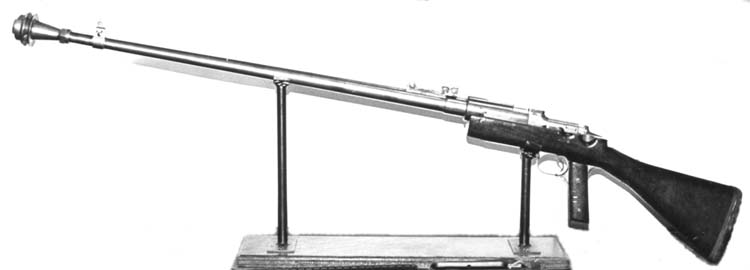
The Italian fighters and their 12.7mm Breda-SAFAT guns were adopted by Spain and Hungary, who made their own ammunition. The Hungarians also used the 12.7x81SR cartridge in the HMG version of their interesting Gebauer GKM engine-driven twin-barrel gun, which was fitted to the Hejja II (licence-built Reggiane Re 2000).
The Japanese Army also became interested in the Breda-SAFAT and in particular its explosive shells, and considered adopting the gun. In the end they did adopt the cartridge but developed their own, superior, aircraft gun, the 12.7mm Ho-103 (based on a smaller version of the .50 Browning) to use it. This fired at 900 rpm and weighed only 48 lbs. It was the standard fighter gun of the Japanese Army Air Force in the latter part of the War. The Japanese also developed their own HE ammunition as well as using the Italian designs.
The Class D
Even less well known is the Vickers .5 inch Class D or HV (for high velocity), also developed in the mid-1920s. This was basically a lengthened version of the usual .5 inch gun, designed around a much bigger and more powerful 12.7x120SR cartridge, initially known as the V/664 (with 664 grain flat-based bullets), which was later replaced as the standard loading by the V/690 (690 grain boat-tailed – streamlined – bullets), which achieved an impressive muzzle velocity of 3,040 fps. Bullet types developed for both the V/664 and V/690 were Ball, AP, AP-T, Flame Tracer, and Smoke Tracer / Incendiary. Weight of the V/690 cartridge was 2,080 grains and a belt of 100 rounds weighed 33.5 lbs. Maximum range claimed was 7,000 yards with a vertical altitude of 15,600 feet but, as with the 12.7×81, effective ranges would have been far less; probably 1,000-1,200 yards in AA fire and double that against ground targets.
The gun barrel was water-cooled as usual and the rate of fire was 350-450 rpm. Gun weight was 101 lbs, or 122 lbs with water, and it was noticeably longer than the compact Class B, with a barrel length of 45 inches and an overall length of nearly six feet. This was offered primarily as an AA gun in a twin mounting, or as an anti-tank gun in a single mounting, although both mountings could be used in either role. The single mounting, complete with water, weighed 623 lbs while the twin weighed just over one ton in action.
Despite various experiments (including installing a twin mounting on a Vickers Light Tank Mk 1A) the Class D was never fielded by Britain. It did achieve some very limited foreign sales; Siam bought 24, China 20 and Japan 48. It is unclear whether any of these saw combat.
Conclusion
The British were never very keen on heavy machine guns, regarding them as being less effective than 20mm cannon firing explosive shells and not really worth the extra size and weight compared with rifle-caliber MGs. As a result, the Vickers .5 inch guns saw relatively little use and their .50 Brownings even less. Ironically, the particular circumstances of recent conflicts have led to the British making more use of HMGs today than they have done at any time since the end of World War 2 – in the shape of the old Browning M2.
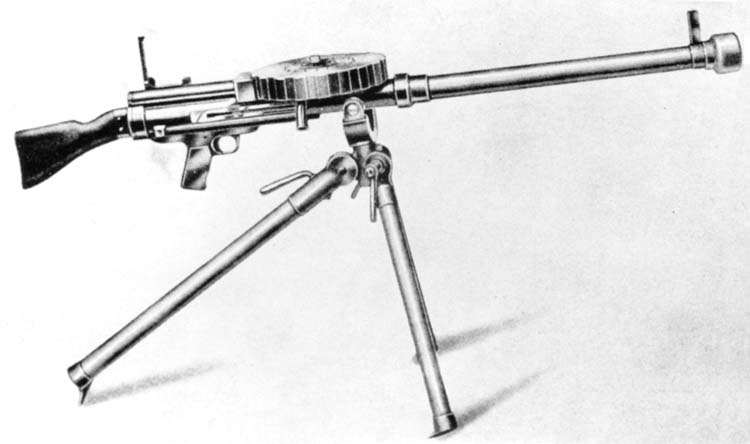
| This article first appeared in Small Arms Review V15N4 (January 2012) |










